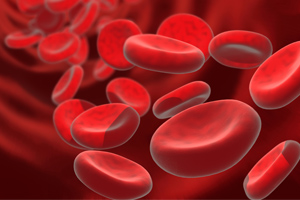 With frequent news coverage of late, C-Reactive protein is a term that has been bandied about in the media – but what is it exactly? Produced in the liver, C-Reactive protein, or CRP, is a protein that is released into the bloodstream as a response to inflammation in the body. High levels of CRP are a cause for alarm, since its presence can be linked to inflammation possibly arising from infection, lupus, tuberculosis, heart attack risk, burns and even cancer.
With frequent news coverage of late, C-Reactive protein is a term that has been bandied about in the media – but what is it exactly? Produced in the liver, C-Reactive protein, or CRP, is a protein that is released into the bloodstream as a response to inflammation in the body. High levels of CRP are a cause for alarm, since its presence can be linked to inflammation possibly arising from infection, lupus, tuberculosis, heart attack risk, burns and even cancer.
CRP is believed to play a significant role in the body’s early defense mechanism against infections, where its physiological role is to bind with a compound present on the surface of dead and dying cells, and even some bacteria, known as phosphocholine. It then activates the complement system, a part of the immune system called the “innate immune system,” via the C1Q complex.
The usefulness of the C-reactive protein is its ability to determine the progress of a disease, and it can also be used to assess whether a treatment for diseases associated with inflammation are working or not. In order to measure the levels of CRP in the blood, first a blood sample from the patient must be collected and analyzed. The levels of CRP in healthy individuals are negligible and will not show up in the test. For sufferers of diseases associated with inflammation, the test will show various levels of CRP in the blood. The measurement of CRP in the bloodstream not only can also help to determine whether someone is at risk of heart disease, but also assesses the severity of the risk.
Studies have found that patients who have raised basal levels of C-Reactive proteins are at an increased risk from diabetes, hypertension and cardiovascular diseases. There is also a strong correlation between the lipid responses to low fat and high-polyunsaturated fat diets and CRP levels.
Some organs in the body are at an increased risk from cancer when they become chronically inflamed, and such inflammation may be highlighted by the presence of CRP in the body. In one study samples were collected from sufferers of colon cancer and a control group, the average levels of CRP in those with colon cancer measured 2.69mg/l, whereas those in the control group had a mean value of 1.97mg/l. With significant difference between the two groups, this supports previous studies that connect the intake of anti-inflammatory medication with the lowering of colon cancer risks.
While the measurement of CRP cannot pinpoint the exact location of the inflammation in the body, it can be used to monitor and detect the presence of diseases associated with inflammation, and can monitor whether medication is effective on inflammatory diseases being treated.















